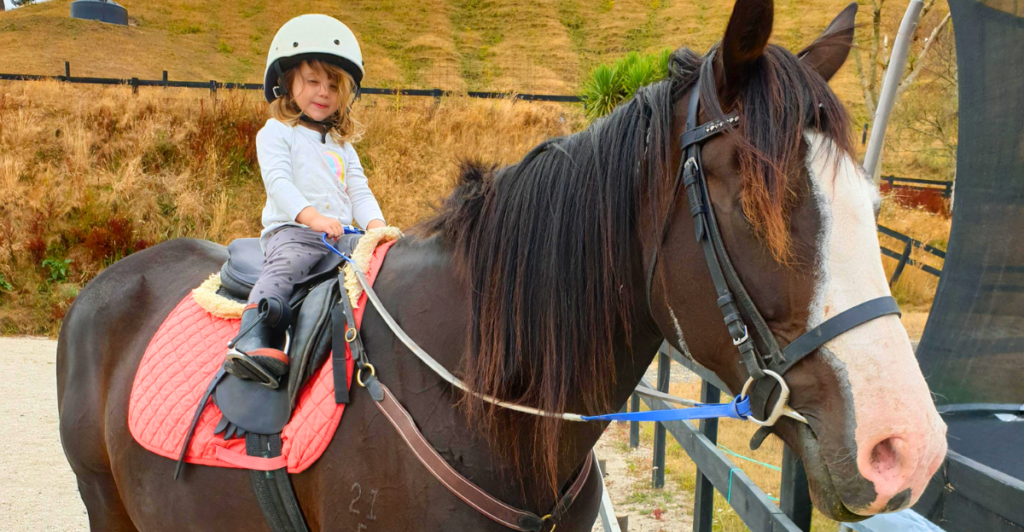
Horseback riding provides kids a full-body workout, enhancing strength, coordination, and balance. Children engage core muscles, develop stability, and improve posture as they learn to control the horse. Riding also promotes flexibility, as it requires movement across the entire body. These physical benefits are essential for overall health and help improve kids’ endurance and cardiovascular fitness. Through regular riding, children gain muscle tone and better motor skills.
Builds Confidence
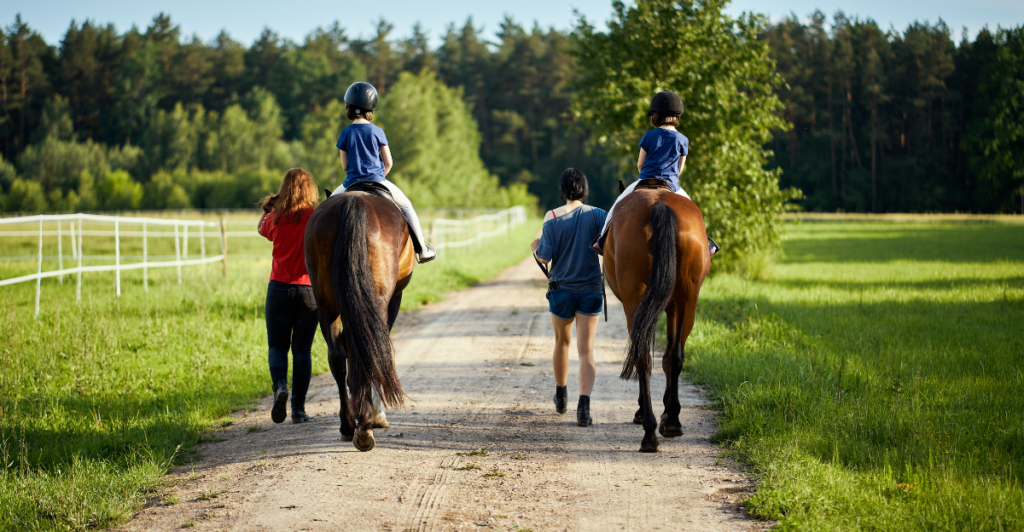
Children who take the reins and control a horse build self-confidence and independence. Successfully guiding a horse through various exercises or obstacles provides a sense of accomplishment. The positive reinforcement they receive helps boost their self-esteem as they realize they can master new challenges. As kids become more comfortable with the horse, their confidence extends beyond riding, affecting other areas of their lives.
Enhances Emotional Regulation
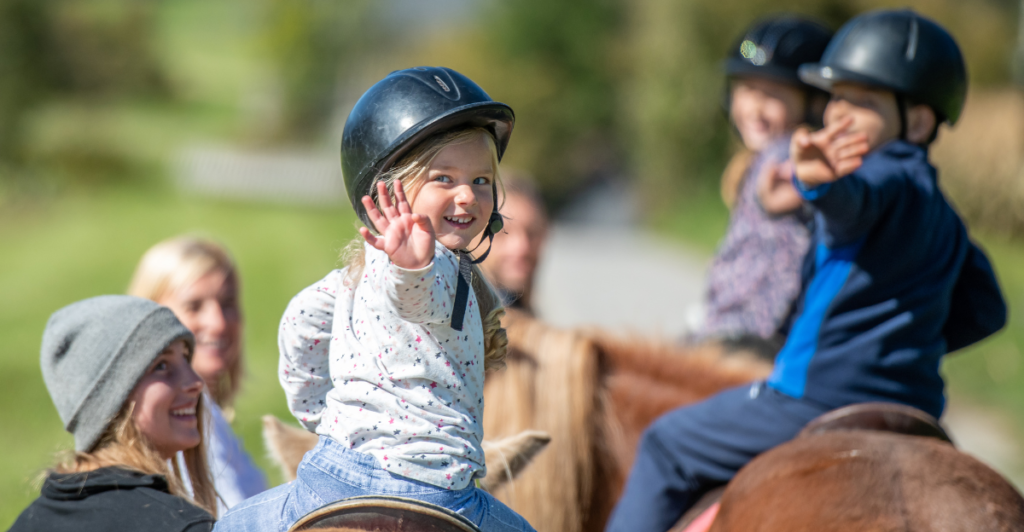
Horseback riding encourages emotional development by requiring kids to stay calm and focused. Interacting with a horse helps children practice patience, empathy, and emotional regulation. Horses can mirror a rider’s emotions, allowing children to understand how their feelings influence their surroundings. This can teach kids to recognize and control their emotions, helping them manage stress and develop coping strategies for daily challenges.
Teaches Responsibility
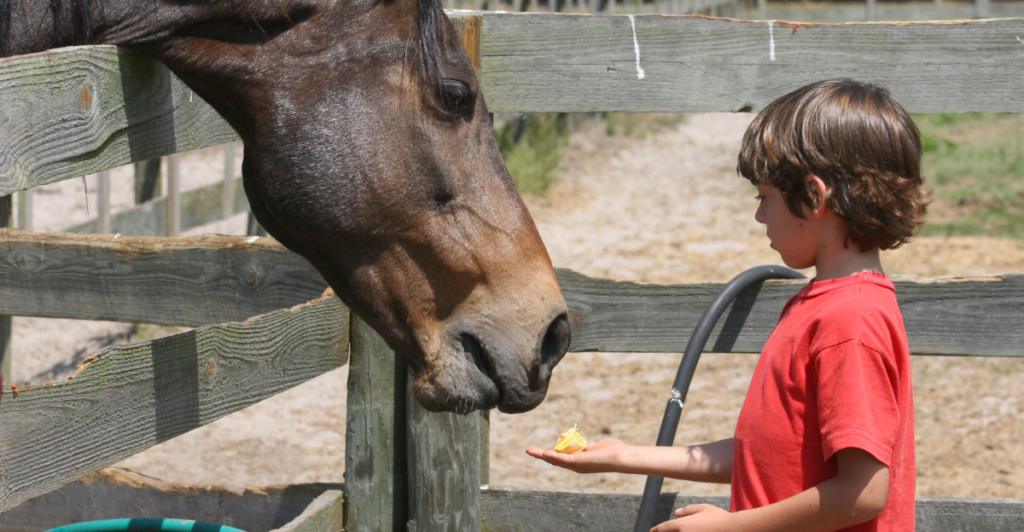
Caring for a horse involves responsibility and accountability, offering children valuable lessons. They must learn how to groom, feed, and maintain the horse’s equipment, which fosters a sense of duty. These tasks teach kids practical skills and instill a work ethic and sense of responsibility. Children who care for animals also develop empathy as they understand that horses depend on them for their well-being.
Encourages Patience

Horseback riding requires patience, as learning to ride and bond with a horse doesn’t happen overnight. Kids must approach the horse gently, take time to develop trust and practice consistently to improve their riding skills. This patience extends beyond riding lessons and can be applied in other areas of life. Developing patience while learning to ride helps children understand that growth and success often take time.
Social Interaction
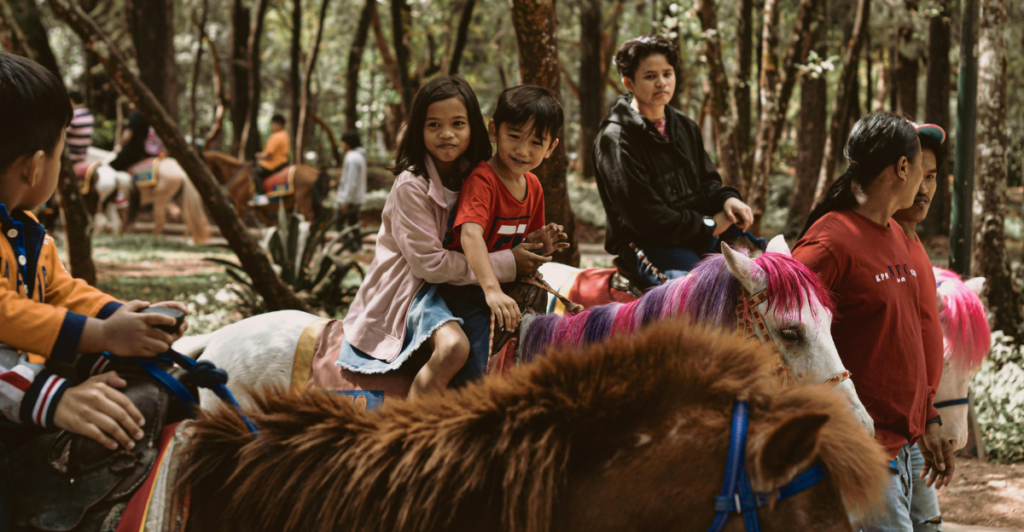
Horseback riding often occurs in group lessons or at riding stables, providing opportunities for kids to interact with their peers. These social settings help children develop communication skills, share experiences, and form friendships. Working in groups also teaches teamwork as kids assist one another with tasks like saddling horses or leading them to the riding area. Social interaction through horseback riding fosters a sense of community and belonging.
Develops Discipline
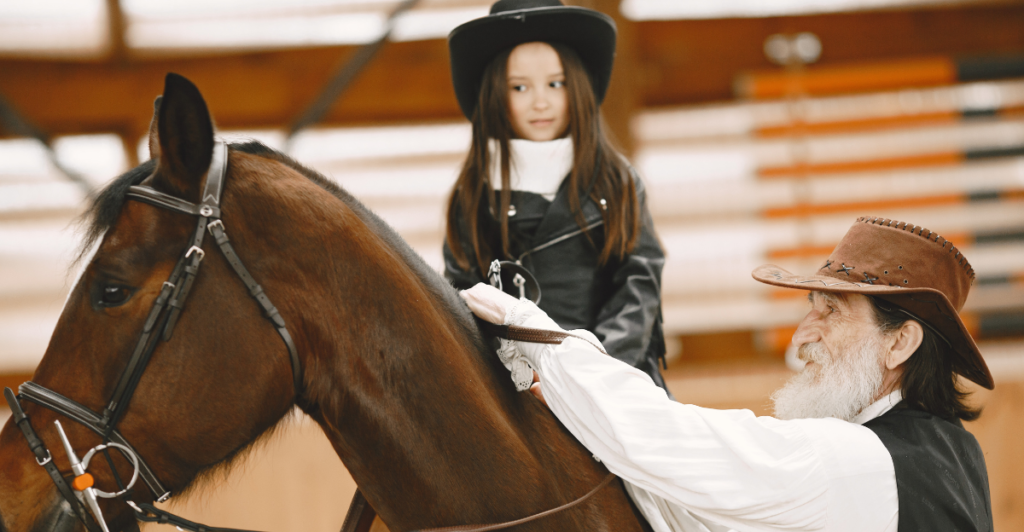
Learning to ride a horse requires discipline and focus. Kids must follow instructions, stay consistent with their practice, and remain committed to improving their skills. Through horseback riding, children learn how to set goals and work toward achieving them, which helps instill long-term discipline. These lessons in persistence and dedication carry over to other activities, teaching kids the importance of hard work and perseverance in all aspects of life.
Connection with Nature
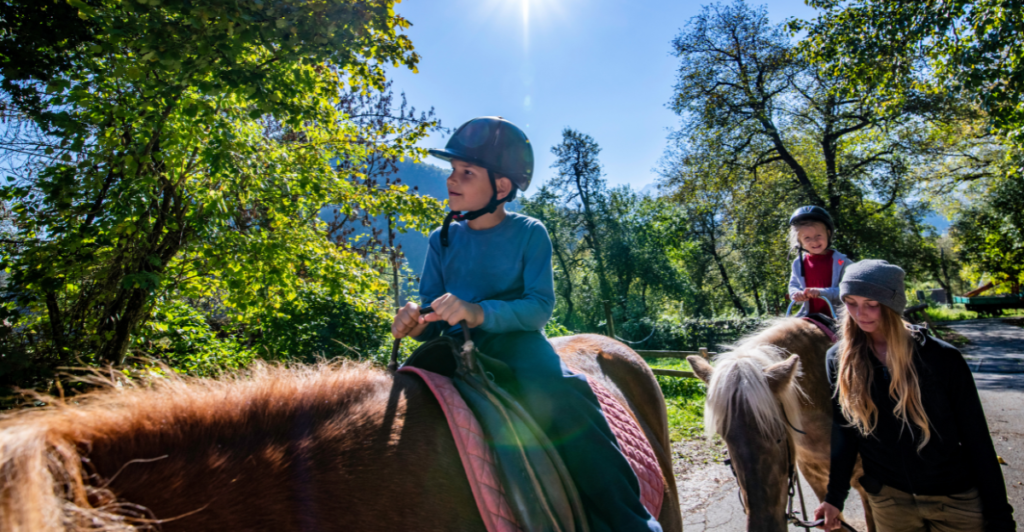
Horseback riding immerses children in the outdoors, fostering a deeper connection with nature. Whether riding through open fields, forests, or along trails, kids experience the beauty and serenity of nature. This exposure to the outdoors promotes environmental awareness and appreciation for the natural world. Spending time outside can also enhance mental well-being, reduce stress, and provide peace, which benefits children’s emotional health.
Improves Focus and Concentration
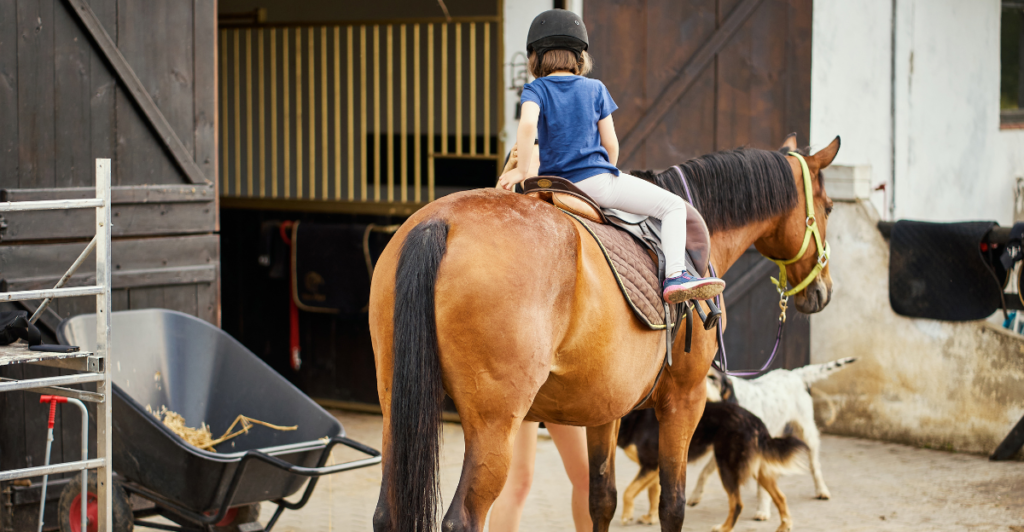
Kids need to stay focused on controlling the horse and maintaining balance when horseback riding. This requires concentration and awareness of their surroundings. Over time, this skill improves their ability to focus on tasks on and off the horse. Riding also teaches children how to multitask, as they must manage their body movements and the horse’s responses. This enhances their cognitive abilities and attention span.
Increases Social Skills
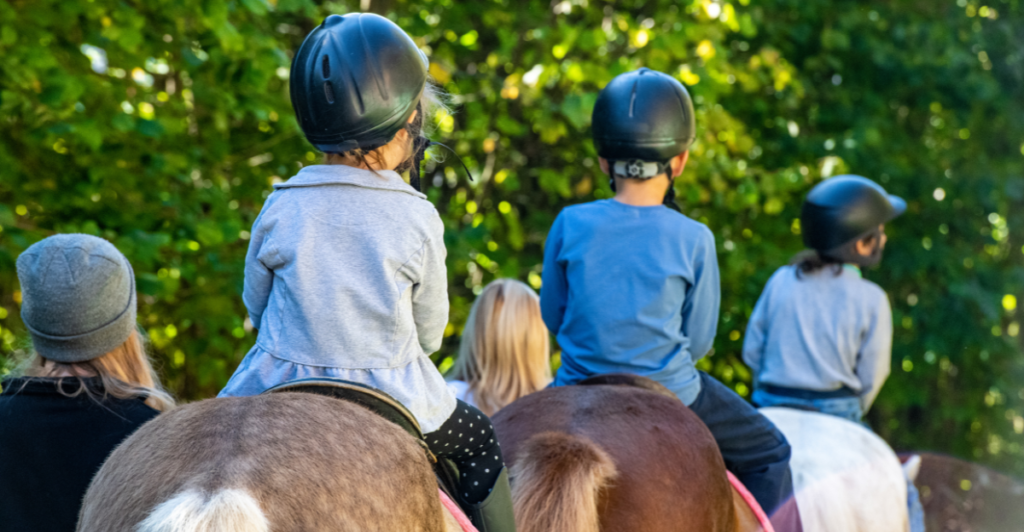
Riding horses often occur in group environments, where kids interact with one another, instructors, and volunteers. This setting encourages children to learn social skills, such as listening, taking turns, and respecting others. These interactions help children become more confident in social situations and improve their communication skills. Horseback riding provides a supportive environment where kids can develop their interpersonal skills in a fun, engaging way.
Enhances Problem-Solving Skills
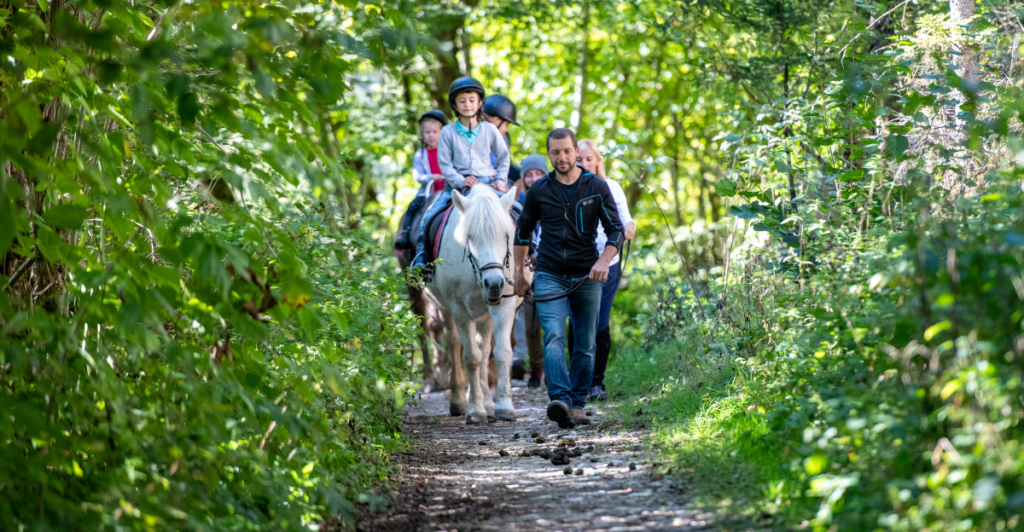
Riding a horse requires kids to make quick decisions and solve problems on the fly. Children constantly think critically when navigating an obstacle course or adjusting to a horse’s behavior. This boosts their problem-solving skills and teaches them to remain calm under pressure. As kids learn to solve problems while riding, they also gain confidence in facing challenges and finding solutions in other areas of life.
Encourages Goal Setting

Horseback riding offers clear goals for kids to work toward, such as mastering a specific skill or completing a riding course. As kids achieve these goals, they experience a sense of accomplishment that reinforces the importance of setting and working toward objectives. This practice of goal-setting teaches kids how to measure progress and track their successes, creating habits that will serve them well throughout their lives in school and beyond.
Fosters a Lifelong Hobby
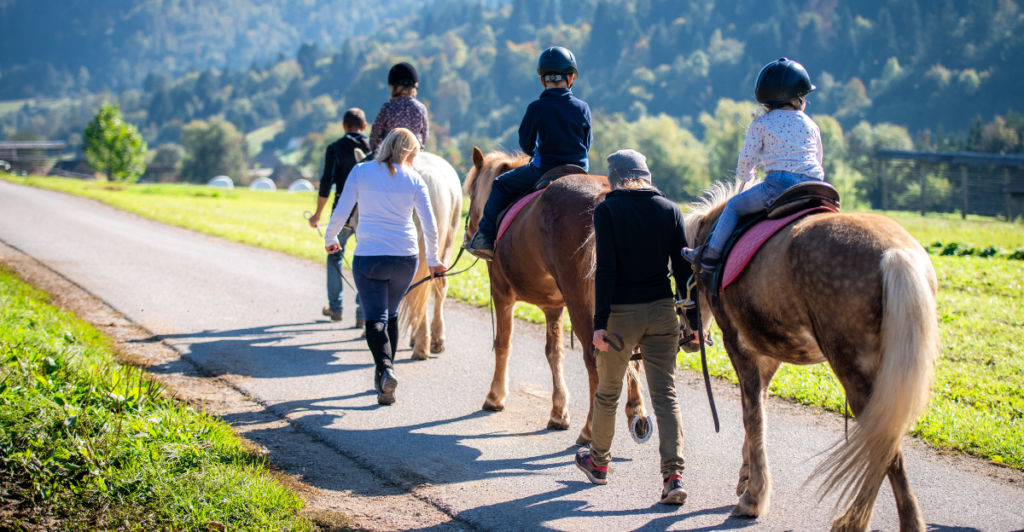
For many children, horseback riding sparks a lifelong interest in horses and outdoor activities. Whether they continue riding into adulthood or transition to other equestrian pursuits, the skills and enjoyment they gain from horseback riding can last a lifetime. The sport encourages ongoing learning and self-improvement, creating opportunities for personal growth and lasting relationships. Horseback riding provides a fun and rewarding experience that can stay with kids throughout their lives.
Discover more of our trending stories and follow us to keep them appearing in your feed

12 Dog Breeds That Should Never Be Left Alone
10 Easy Ways To Stop A Dog Fight
California Is Breaking Apart: A Fault Line Is Forming Faster Than Anyone Predicted
The War on Cows Is Over—And Green Extremists Have Lost
This article first appeared here
Stay connected with us for more stories like this! Follow us to get the latest updates or hit the Follow button at the top of this article, and let us know what you think by leaving your feedback below. We’d love to hear from you!







